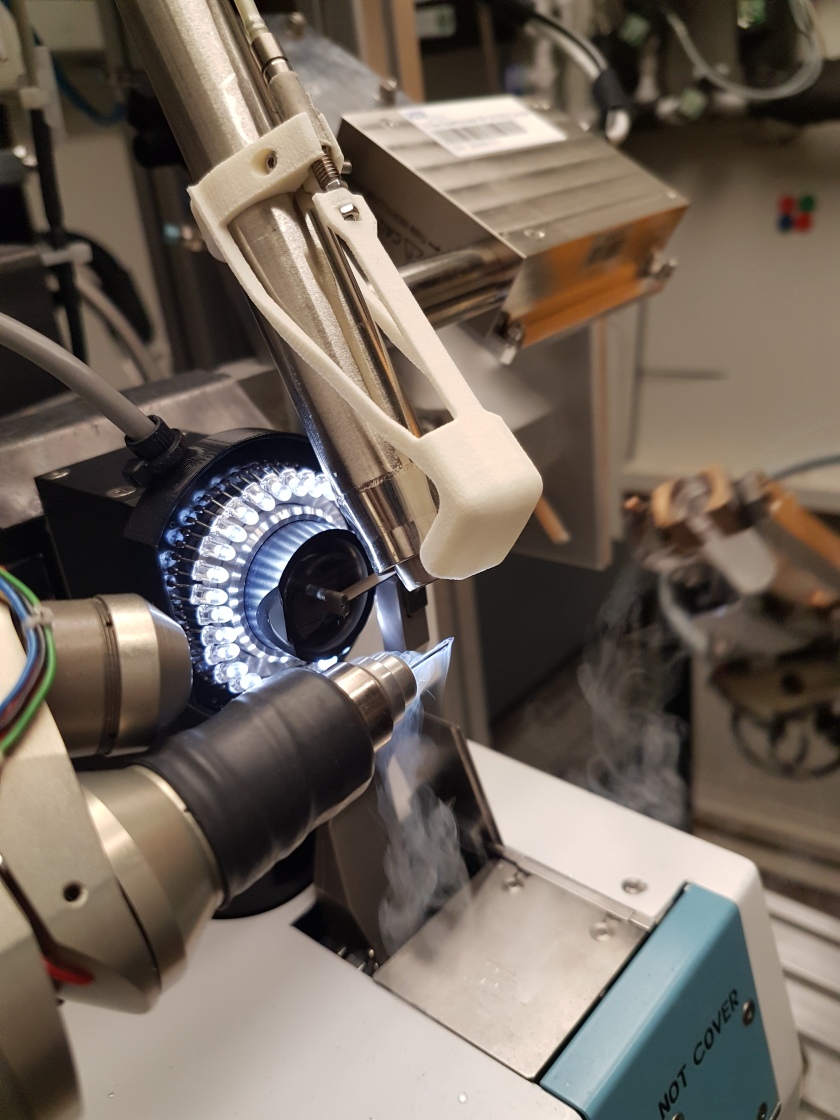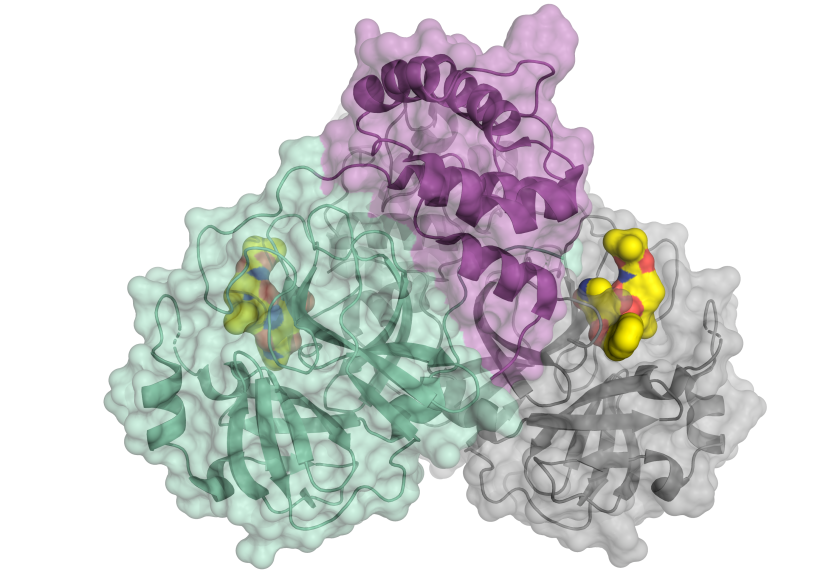Corona research: Consortium of Berlin research and industry seeks active ingredients

Protein crystals are analysed in the MX laboratory at BESSY II with hard X-rays. © C. Feiler/HZB

At BESSY II, Prof. Rolf Hilgenfeld (Uni Lübeck) was able to analyse an important protein of the SARS-CoV2 virus, the viral main protease which enables the virus to multiply. © H.Tabermann/HZB
The Berlin biotech company Molox GmbH and a team at the Helmholtz-Zentrum Berlin (HZB) have initiated a consortium of regional research groups and BASF. Together, they want to identify a starting point for the development of a potential active substance against the new coronavirus. Targets of potential inhibitors will be SARS-CoV2 proteins that promote the spread or infectivity of the viruses. Scientists from Freie Universität Berlin are also involved in the research work.
"Berlin combines important large-scale infrastructure with an excellent network of academic and industrial structural biologists and biochemists. The distances here are short, but resources and expertise must be strategically coordinated to be successful," says Dr. Holger von Moeller, the owner of the biotech company Molox.
Access to synchrotron radiation is essential for the success of the project. This particularly intense radiation is provided by the Berlin Electron Storage Ring for Synchrotron Radiation (BESSY II), which is operated by the HZB.
Several research groups at Freie Universität Berlin led by Prof. Markus Wahl, Prof. Christian Freund, Dr. Ursula Neu, and Prof. Sutapa Chakrabarti are working with Molox to produce the proteins and then crystallize them.
"The HZB is making all existing infrastructures available to the joint project," explains Dr. Manfred Weiss, head of the Research Group Macromolecular Crystallography (MX) at HZB.
BASF is the first project partner from the chemical industry to provide funds to start the investigations. Protein crystals will be saturated with potential inhibitors and subsequently analysed on the MX beamlines of BESSY II. In this way it can be discovered which compounds are particularly good at inhibiting the function of the protein - these should then be the starting points for the development of active substances.
The consortium is currently negotiating with other partners in order to acquire them and their substance libraries. "We are looking forward to this joint project and hope that we will be able to identify new potential active substances against SARS-CoV-2 very quickly", says Dr. Christian Feiler, project leader at HZB.
red.
https://www.helmholtz-berlin.de/pubbin/news_seite?nid=21283;sprache=en
- Copy link
-
Electrocatalysis with dual functionality – an overview
Hybrid electrocatalysts can produce green hydrogen, for example, and valuable organic compounds simultaneously. This promises economically viable applications. However, the complex catalytic reactions involved in producing organic compounds are not yet fully understood. Modern X-ray methods at synchrotron sources such as BESSY II, enable catalyst materials and the reactions occurring on their surfaces to be analysed in real time, in situ and under real operating conditions. This provides insights that can be used for targeted optimisation. A team has now published an overview of the current state of knowledge in Nature Reviews Chemistry.
-
BESSY II: Phosphorus chains – a 1D material with 1D electronic properties
For the first time, a team at BESSY II has succeeded in demonstrating the one-dimensional electronic properties in phosphorus. The samples consisted of short chains of phosphorus atoms that self-organise at specific angles on a silver substrate. Through sophisticated analysis, the team was able to disentangle the contributions of these differently aligned chains. This revealed that the electronic properties of each chain are indeed one-dimensional. Calculations predict an exciting phase transition to be expected as soon as these chains are more closely packed. While material consisting of individual chains with longer distances is semiconducting, a very dense chain structure would be metallic.
-
Did marine life in the palaeocene use a compass?
Some ancient marine organisms produced mysterious magnetic particles of unusually large size, which can now be found as fossils in marine sediments. An international team has succeeded in mapping the magnetic domains on one of such ‘giant magnetofossils’ using a sophisticated method at the Diamond X-ray source. Their analysis shows that these particles could have allowed these organisms to sense tiny variations in both the direction and intensity of the Earth’s magnetic field, enabling them to geolocate themselves and navigate across the ocean. The method offers a powerful tool for magnetically testing whether putative biological iron oxide particles in Mars samples have a biogenic origin.
